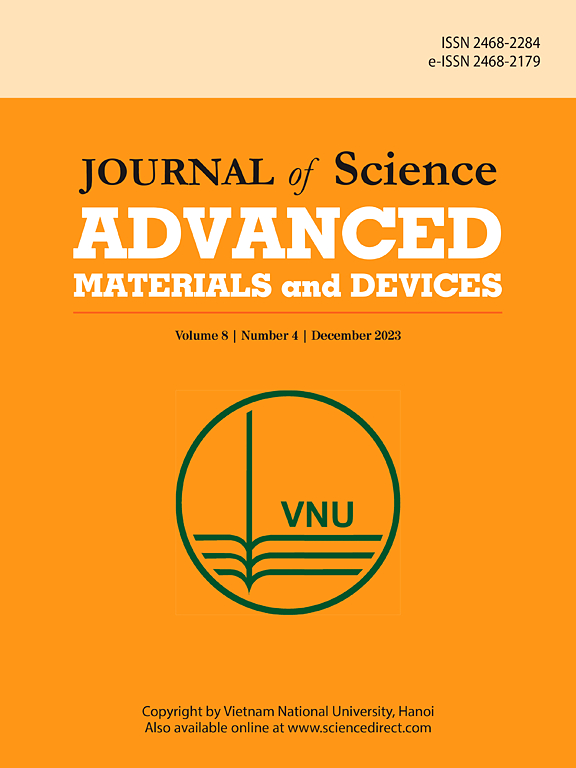使用纳秒脉冲激光制造燃料电池用碳纳米管复合材料双极板的研究
IF 6.7
3区 材料科学
Q1 MATERIALS SCIENCE, MULTIDISCIPLINARY
Journal of Science: Advanced Materials and Devices
Pub Date : 2024-10-10
DOI:10.1016/j.jsamd.2024.100803
引用次数: 0
摘要
用于氢燃料电池的石墨基双极板的通道由于成型伸长率低且易于加工,主要通过铣削加工制造。然而,在铣削过程中,由于刀具磨损和振动,加工精度较低,且存在破损风险。非传统激光加工可以通过非接触加工解决刀具磨损和振动问题。本研究观察了纳秒脉冲激光与 CNT 复合材料的相互作用特性,并制造了通道和双极板。观察了扫描速度和脉冲持续时间对相互作用特性的影响。在低扫描速度和高脉冲持续时间下,由于高热效应,出现了缺陷。根据平行间距[ΔS]和扫描次数(NOS)制作通道。对通道的深度、顶宽、底宽、通道角度、材料去除率和表面粗糙度进行了评估,并观察到ΔS的显著变化。测量了激光加工通道的化学成分、表面电阻和接触角。激光加工通道被氧化,表面电阻和接触角增大。最后,研究了使用激光加工 CNT 复合材料双极板的可制造性。本文章由计算机程序翻译,如有差异,请以英文原文为准。
A study on the manufacture of CNT composites bipolar plate for the fuel cell using a nanosecond pulsed laser
The channels of the graphite-based bipolar plate for hydrogen fuel cells were mainly manufactured through milling due to low forming elongation and processability. However, during the milling process, the machining precision is low due to tool wear and vibration, and there is a risk of breakage. Non-traditional laser processing can solve the problems of tool wear and vibration through non-contact processing. In this study, the interaction characteristics of the nanosecond pulsed laser and CNT composites were observed, and channels and bipolar plates were manufactured. The effect of scanning speed and pulse duration was observed for interaction characteristics. Defects were observed due to high thermal effects at low scanning speed and high pulse duration. Channels were created depending on parallel pitch distance [] and Number of Scans (NOS). The channel was evaluated for depth, top width, bottom width, channel angle, material removal rate, and surface roughness, and significant changes were observed depending on . The chemical composition, surface resistance, and contact angle of the laser-processed channel were measured. The laser processed channel was oxidized, and the surface resistance and contact angle increased. Finally, the manufacturability of the CNT composites bipolar plate using laser was examined.
求助全文
通过发布文献求助,成功后即可免费获取论文全文。
去求助
来源期刊

Journal of Science: Advanced Materials and Devices
Materials Science-Electronic, Optical and Magnetic Materials
CiteScore
11.90
自引率
2.50%
发文量
88
审稿时长
47 days
期刊介绍:
In 1985, the Journal of Science was founded as a platform for publishing national and international research papers across various disciplines, including natural sciences, technology, social sciences, and humanities. Over the years, the journal has experienced remarkable growth in terms of quality, size, and scope. Today, it encompasses a diverse range of publications dedicated to academic research.
Considering the rapid expansion of materials science, we are pleased to introduce the Journal of Science: Advanced Materials and Devices. This new addition to our journal series offers researchers an exciting opportunity to publish their work on all aspects of materials science and technology within the esteemed Journal of Science.
With this development, we aim to revolutionize the way research in materials science is expressed and organized, further strengthening our commitment to promoting outstanding research across various scientific and technological fields.
 求助内容:
求助内容: 应助结果提醒方式:
应助结果提醒方式:


